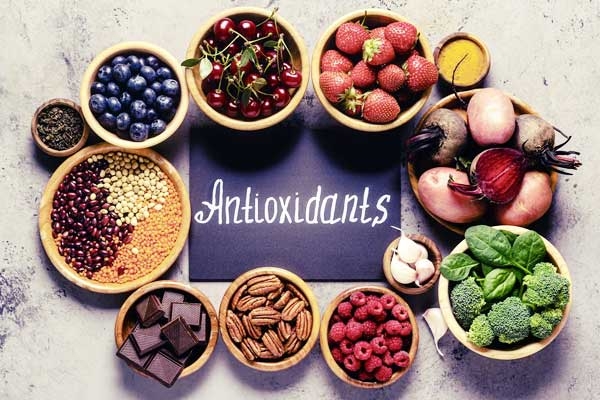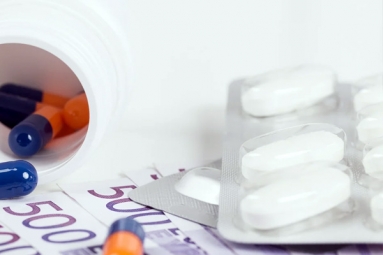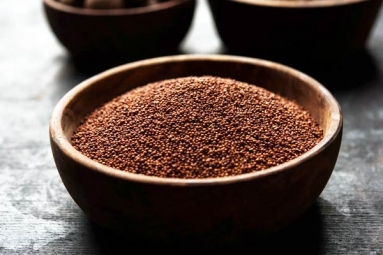
(Image source from: Canva.com)
India is frequently referred to as the diabetes capital of the globe, making discussions regarding nutrition and wellness increasingly important. Although sugars and processed carbohydrates are commonly blamed, studies indicate that there’s another significant factor to consider: oxidative stress. Oxidative stress can be understood as what occurs when excess glucose in the bloodstream "burns" and releases unstable particles, known as free radicals. When these accumulate, they harm cells, including those responsible for producing insulin. This complicates diabetes management. This is where antioxidants come into play. They act like kitchen helpers, quietly tidying up the clutter and shielding the body from harm. The fascinating part? Many of these are likely already present in your kitchen. Diabetes isn't solely about elevated sugar levels; it also relates to how the body manages those sugar increases. When blood sugar remains consistently high, it strains the pancreas, the gland that creates insulin. The free radicals generated during this incident can cause damage, making it more difficult for insulin to function. Antioxidants work like fire extinguishers, extinguishing this "sugar fire." They neutralize free radicals, safeguard pancreatic cells, and enhance the body's insulin response. This is the reason foods abundant in antioxidants are currently being researched for their potential in managing diabetes.
Foods with Antioxidants that Promote Healthy Blood Sugar:
Berries and Colorful Vegetables: Berries like blueberries and strawberries, as well as purple foods such as black rice and red cabbage, owe their bright hues to substances called anthocyanins. Research indicates that these substances not only combat oxidative stress but also enhance insulin responsiveness. In straightforward terms, they assist the body in utilizing insulin effectively, which helps maintain stable blood sugar levels.
Ways to incorporate them: Toss berries into your morning yogurt or oatmeal, mix red cabbage into a salad, or include black rice in your pulao for a fun and colorful touch.
Garlic and Onions: Essential ingredients in most Indian curries, garlic and onions provide more than just taste. They are loaded with allium compounds, which help to lessen inflammation and manage blood sugar levels. Garlic, in particular, has been examined for its ability to reduce blood sugar, referred to as its hypoglycaemic effect. Whether it's garlic tadka in dal or onions in a stir-fry, these common ingredients contribute silently to your well-being.
Ways to incorporate them: Fresh garlic chutney, onion kachumber salad, or garlic-infused rasam are convenient and traditional methods to enjoy their health benefits.
Carrots, Pumpkin, and Spinach: Vibrant vegetables like carrots, pumpkin, and spinach are high in beta-carotene. Research suggests that individuals who eat more beta-carotene may have a lower chance of developing type 2 diabetes, even if they have genetic predispositions. These vegetables assist insulin performance while also countering oxidative stress. Picture them as colorful defenders on your plate - the greater the variety you add, the stronger the defense.
Ways to incorporate them: Carrot halwa with reduced sugar, pumpkin sabzi, spinach dal, or palak paratha are great everyday choices.
Green Tea And Cocoa: Green tea is not just a calming beverage. It is full of catechins, substances that help protect cells from damage and enhance how the body uses sugar. Cocoa and dark chocolate, when consumed in small amounts, can offer similar advantages. One easy way to add catechins to your meals is by switching a cup of regular tea for green tea or enjoying a piece of dark chocolate after a meal.
How to incorporate them: Swap your sweet evening drink for green tea or add unsweetened cocoa to your smoothies.
Nuts, Seeds, And Leafy Greens: Zinc and manganese are minerals that work like natural protectors for the body. Zinc aids in the creation and release of insulin, while manganese safeguards the pancreatic cells that manage blood sugar levels. Foods like almonds, cashews, pumpkin seeds, and spinach are abundant in these minerals. Eating a small handful of nuts or seeds each day can be a wise snack option for those monitoring their blood sugar.
How to incorporate them: Munch on roasted pumpkin seeds, add flaxseeds to raita, or mix spinach into sabzis and parathas.
Food by itself isn't enough to control diabetes. A healthy diet is most effective when combined with regular exercise, maintaining a healthy weight, and reducing stress. Foods high in antioxidants work like a support system in a bigger team—they are helpful, but they are most effective when lifestyle choices are in sync. Antioxidants should not take the place of medicine, but they can help the body combat oxidative stress. When paired with smart eating, exercise, and balance, they serve as strong partners in managing diabetes. While India is seeing a rise in diabetes cases, the kitchen remains the first line of defence. By making your meals brighter and richer in nutrients, you not only bring more taste to your food but also add an extra layer of protection for your health.










